Herringbone vs. Staggered: Which Business Class Seat Is Better?
In the world of premium cabin design, airlines strive to create the most efficient layout while maximizing passenger comfort. But which concept is best?
by John Walton
November 9, 2023
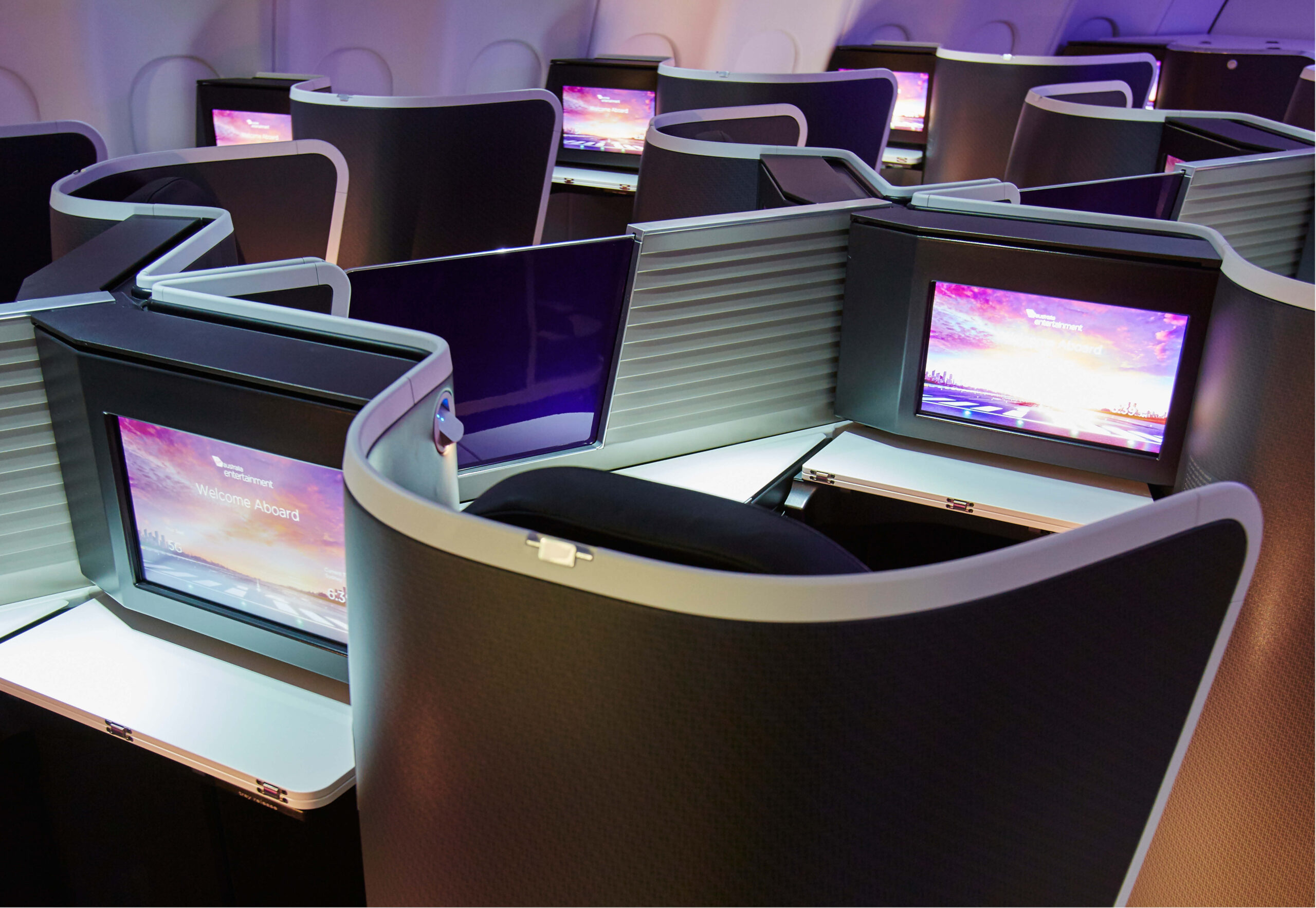
Photo: Virgin Australia Business Class. Courtesy of BE Aerospace
The vast majority of long haul business class seats flying today — and a number of the premium medium haul seats, too — come in one of two configurations: herringbone or staggered.
They’re named for how each seat tesselates with the seat behind or next to it for airlines to fit the maximum number of passengers on board in as much comfort as can be designed within the economic needs of the airline.
Is one better than the other? Passengers differ on that, and here’s why.
Herringbones: angled either away from or towards the aisles
Arranging seats in a herringbone pattern was the first way airlines tried to give direct aisle access to every fully flatbed in business class.
Indeed, in the mid-1990s, it was the way that British Airways introduced fully flat beds in first class aboard its now-retired Boeing 747s. On the business class side, Virgin Atlantic developed its first Upper Class Suite in-house in the early 2000s, also for its fleet of 747s.
The large size of the 747 aircraft allowed airlines to utilize the width of the cabin space to install angled seats. Initially, the seats were angled towards the aisle, but in the 2000s, the introduction of the Cirrus seat by the company now known as Safran Seats allowed airlines to angle the seats away from the aisle.
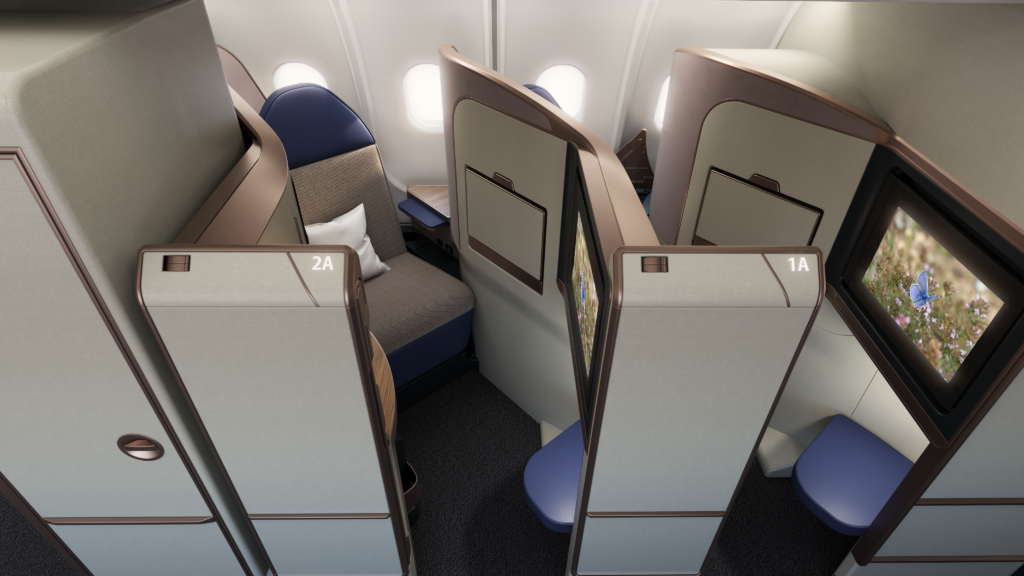
Photo: Aurora Herringbone. Courtesy of Collins Aerospace
That sequence of introduction is why many still call the inward-facing seats “herringbone” and the outward-facing seats “reverse herringbone,” even though the latter is far more popular with airlines (and many passengers) these days.
Modern herringbone seats offer a key advantage – they provide privacy. Outward-facing herringbone seats are positioned in a way that faces either the window or a center divider rather than toward the aisle. However, in some cases, the dividers may not be high enough for taller passengers, which may have a negative impact on their experience.
The inward-facing or original-style herringbone seats are positioned towards the aisle. While older models lacked privacy walls, modern versions have them, creating a less open-cabin ambiance. Some airlines have introduced a “hybrid herringbone” layout, such as on Virgin Atlantic’s A350s, where the center seats face the aisle and the window seats face the windows, offering the best of both worlds.
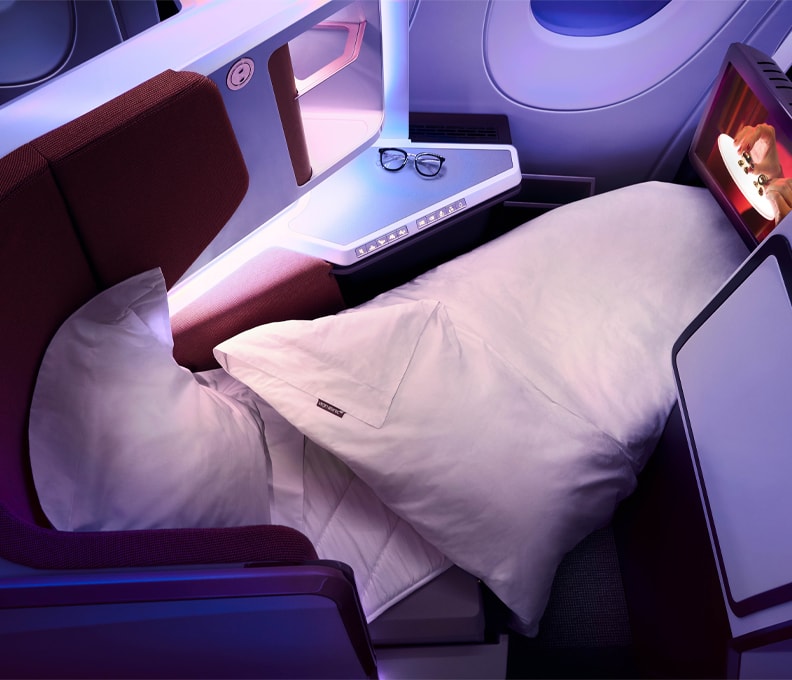
Photo: Virgin Atlantic A350 Upper-Class bed. Courtesy of Virgin Atlantic
Like any airline seat, there are tradeoffs, too. Apart from privacy, there’s the angle question. Some passengers dislike the original inward-facing herringbone style because they aren’t fans of turning their necks to look out the window.
Some travelers do not prefer the newer outward-facing herringbone seats because the seat structure obstructs the view of the windows, and a side table separates them. These problems can vary between aircraft, depending on the width of their cabins.
For instance, the first herringbone seat on the 747 by Virgin Atlantic had a greater angle and was more spacious at some points compared to the same model adapted for the smaller 787 and A330 airframes.
Staggers: overlapping at the foot and shoulders
Staggered seats emerged in the mid-2000s, with early customers including Etihad, Delta, and Swiss.
For instance, Delta’s 767-300ERs and Swiss’ A330s and A340s still have their original, slightly updated seats nearly twenty years later, reflecting their popularity and efficiency.
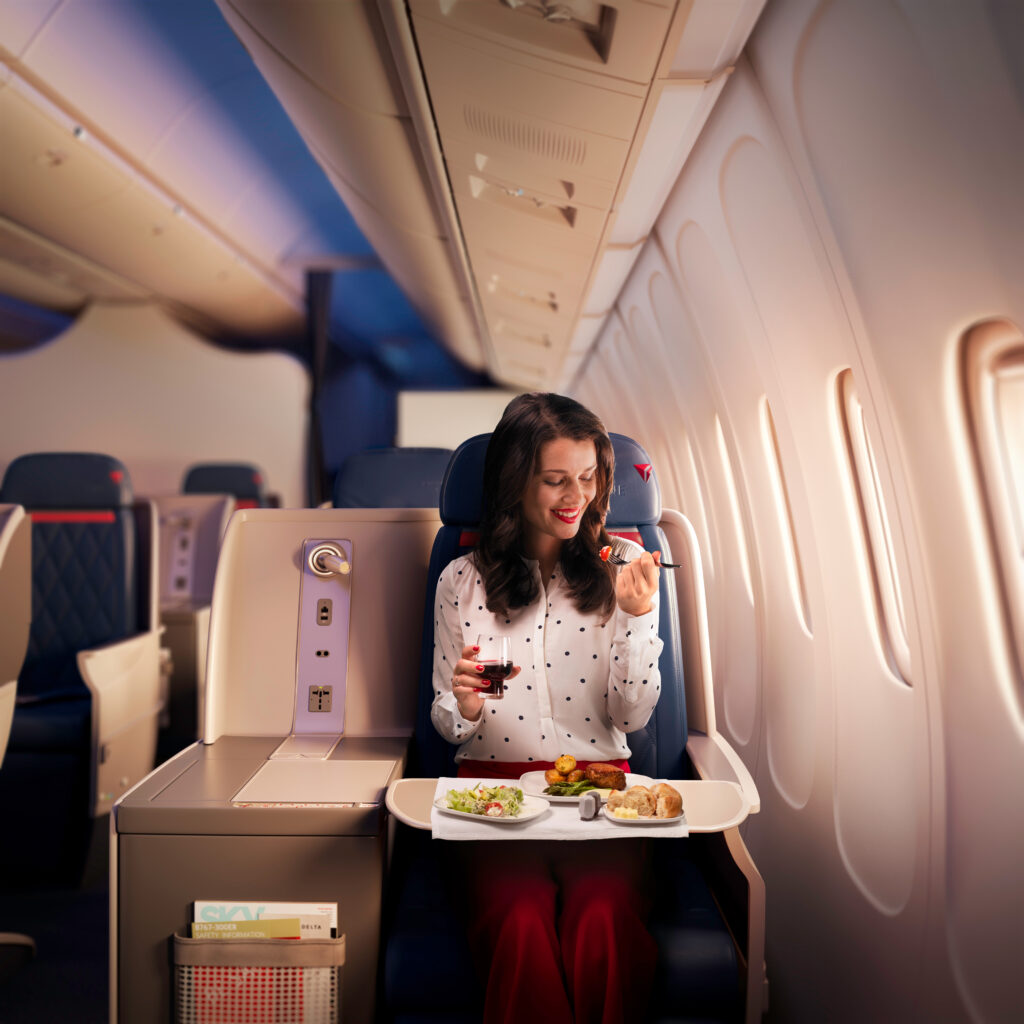
Photo: Boeing 767-300ER. Delta One. Courtesy of Delta
The concept of staggered seats is based on the flatbed seats first introduced in 2000 by British Airways. The original design featured a fan divider and provided a comfortable sleeping experience.
Since humans are narrower at the feet than at the shoulders, it makes sense to stagger the bed mode layout so that one passenger’s feet are next to the shoulders of the passenger behind, saving space and ensuring a comfortable journey for all passengers.
In some airplane seats, the footwell where passengers’ feet are placed in bed mode doubles as a side table for the passenger in front. The original Thompson Vantage product, which is still used by several airlines, initially offered direct aisle access to most passengers but not all.
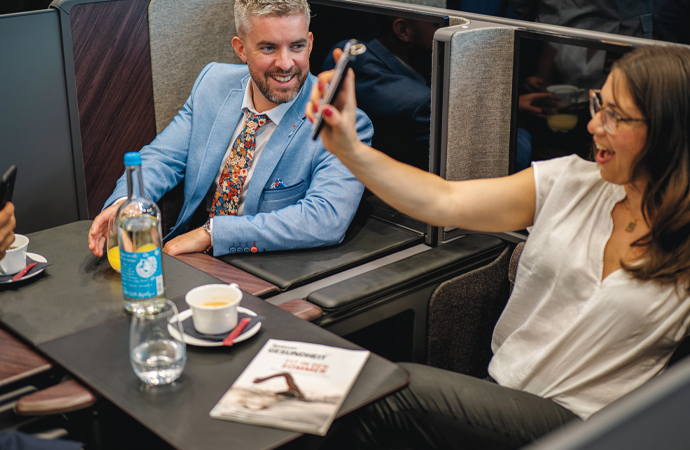
Photo: The Thomson Vantage XL seat is a popular, spacious, fully flat bed with direct aisle access. Courtesy of AIX2023
These layouts maximized the number of passengers on board, sacrificing direct aisle access for two out of nine people (on an example Airbus A330 or A340 layout). However, most staggered seats, including Qantas’ Vantage XL seats launched in the mid-2010s and now used by many other airlines, have direct aisle access for every passenger without sacrificing density. Some of these seats come with doors, while others do not.
Another evolution has been the footwell spaces’ size, shape, and ergonomic design. In early models, these could feel quite restrictive, especially for taller or broader passengers, those with big feet, and anyone who didn’t sleep on their back.
Turning over in your sleep meant a smack to the shins or a knock to the knees from the surrounding seat shell. In larger, later seats, there is not only extra space from wider and higher footwells, but some of the literal pain points at the shin and knee have been chamfered away in their design.
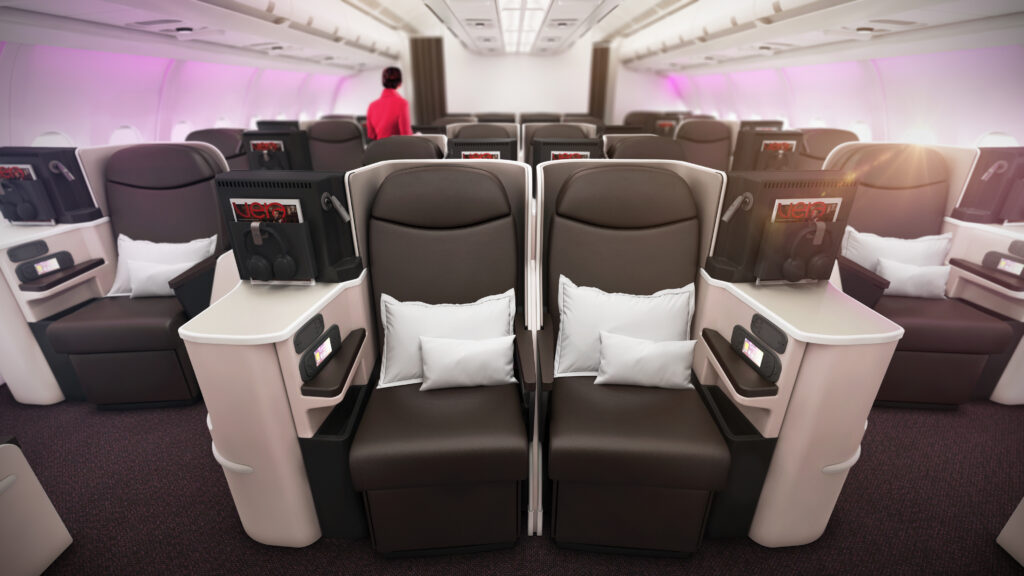
Photo: Courtesy of Virgin Atlantic
The herringbone layout of an aircraft offers a unique advantage by providing “honeymoon” seats for two passengers traveling together. In larger aircraft of size approximately equal to or greater than A330, airlines can arrange the middle seats adjacent to each other rather than separated by a side table. This seating arrangement is a popular choice for premium leisure travelers, couples, parents traveling with kids, friends traveling together, and those who require assistance during the flight.
One of the main challenges of staggered seating arrangements is the problem of good and bad seats. The “good seats” have a side table or footwell between them and the aisle, providing passengers more privacy and protection from being bumped into by the crew or other travelers. On the other hand, the “bad seats” are located immediately next to the aisle, with the side table or footwell next to the window. These seats are less private and more likely to be bumped into.
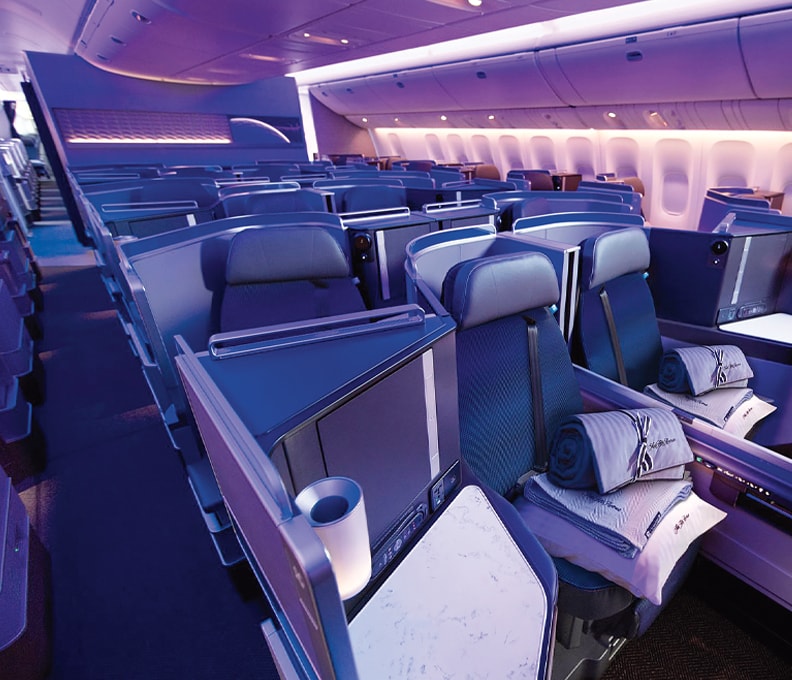
United Polaris / Photo: Courtesy of United Airlines
Although it may seem like a problem that only affects business class travelers, the implementation of doors in business class is an attempt to address it. United’s Polaris seats, based on the Safran Optima platform, are designed with aisle-adjacent seats that are slightly set back from the aisle to help alleviate this issue.
Other Available Variations
There is an ongoing debate on whether staggered or herringbone seating is better.
However, a few premium airline seats stand out, such as Finnair’s new sofa-style business class, ANA’s The Room semi-staggered seat that can be adjusted forwards and backward, or American Airlines‘ Concept D herringbone seat that has received mixed reviews.
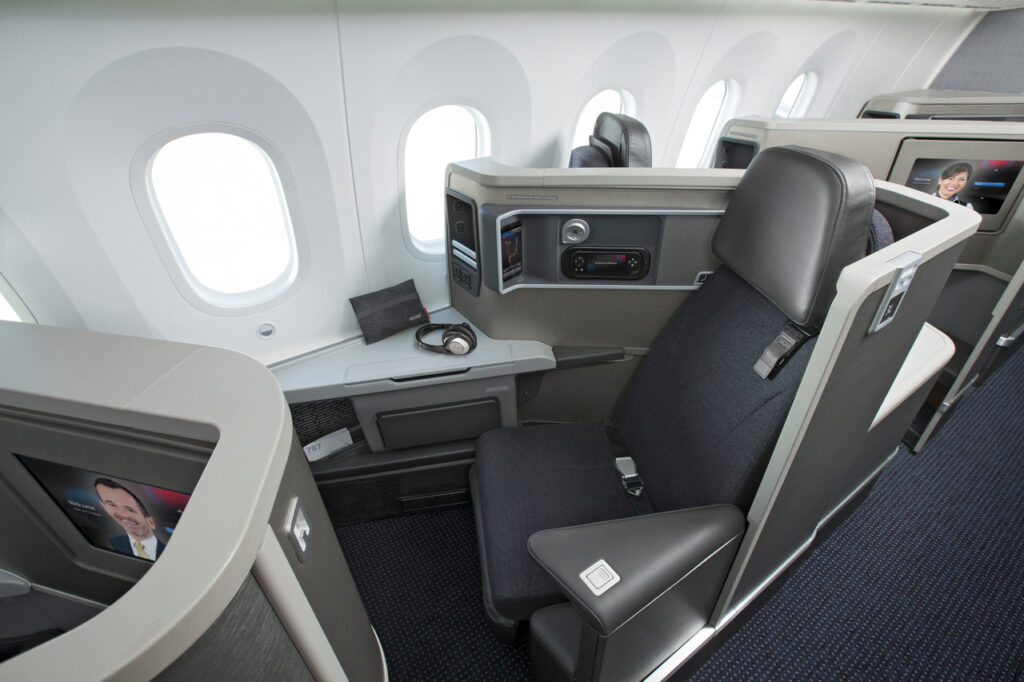
Photo: American Airlines Concept D Business Class seat. Courtesy of American Airlines
As airlines continue to innovate and explore new ways to improve their business class offerings beyond the current suite doors, we may see more exciting options on our future flights.



